Glookies
Cannabinoid THC Dominant
THC 15 - 19%
CBD 0.31 - 0.45%
Effect Uplifted
Side Effect Hunger
Flavor Spicyherbal
Glookies Strain Information
THC
CBD
Potency
Glookies marijuana strain is a child of famous parents Gorilla Glue #4 and Thin Mint GSC. Leaning to Indica, this weed strain has an 80/20 ratio, however, sometimes the effects of the Sativa are also noticeable. THC levels range from 15% to 19%, so beginners can appreciate this marijuana. However, you should still be careful. The terpene profile is quite diverse and includes:
- Caryophyllene
- Myrcene
- Limonene
- Bisabolol
Glookies Strain Aroma
Not surprisingly, Glookies marijuana strain has adopted their parents' catchy sweet cookie flavor. Pleasant nutty flavor by humulene mixed with honey flavor will impress sweets’ lovers. At the same time, bisabolol gives an earthy note and a spicy herbal aftertaste. Some consumers also note the light scent of diesel.
Reported Effects
As smokers point out, high begins with an active burst of creativity and inspiration. In addition, you may also be immersed in a euphoric state that does not cause an increase in anxiety, but rather the opposite. The action of Glookies weed strain is long-lasting, so do not rush, but rather wait for the effects to occur. They may also include:
- Giggles
- Tingles
- Happiness
However, if too large amounts are consumed, the following side effects may occur:
- Dry eyes
- Panic attacks
- Hunger
The levels of THC and the potency of the strain are sufficient to help medical patients cope with symptoms of:
- PTSD
- ADD/ADHD
- Stress
- Arthritis
- Insomnia
- Anxiety
Growing Info
On average, the bushes of this plant are 30-60 inches tall, so they can be grown both indoors and outdoors. Moreover, in both cases, the yield will be 1-2 oz / ft2 or per plant. The average flowering period for buds is 52-62 days, and you can harvest in 59 days after germination.
Side Effects
Simply let us know how this strain tastes or write a detailed review.
Glookies Strain Cannabinoids
| THC | Tetrahydrocannabinol, or THC, is a major cannabis chemical compound. It is a psychoactive element that stimulates dopamine release and induces euphoria or happiness. THC-rich strains may be helpful with such conditions as lack of appetite, chronic pains , etc. It is considered to be the primary active marijuana component. | 15 - 19% |
| CBD | Cannabidiol, or CBD, is a major compound in cannabis, which is non-psychoactive. It is also proved to counteract the side effects of the second major component THC. CBD is widely used for medicinal purposes in rubs, oils and so on. It is helpful in muscle pain cases, may treat arthritis and migraines. Even Greeks used it against pain, while Queen Victoria applied it to get rid of menstrual cramps. | 0.31 - 0.45% |
| CBC | Cannabichromene, or CBC, is a minor cannabinoid, meaning that its quantity in cannabis is quite little. Though it has the same origin as CBD and THC, it is different in functions. Without any psychoactive effects, it is an efficient cannabis compound in combating acne and depression. CBC produces analgesic, antibacterial and anti-inflammatory effects. | 0.31 - 0.37% |
| CBG | Cannabigerol, or CBG, is one of the minor cannabis compounds in adult plants. On the other hand, young ones contain a lot of this antibacterial and anti-inflammatory component. During the growth, CBG is converted into different cannabinoids, mostly THC and CBD. The compound itself increases appetite and decreases eye pressure. | 0.1 - 0.29% |
| CBN | Cannabinol, or CBN, is a trace element in cannabis that is considered to be mildly psychoactive. It appears from oxidation THC, exposed to light and heat. CBN is mostly contained in old cannabis and in traditional hashish. It is effective against insomnia, bacterial infections and appetite loss. | 0.26 - 0.47% |
| THCV | Tetrahydrocannabivarin, or THC-V, is a compound contained in cannabis in trace amounts. Even though it is close to THC molecularly, it is different in effects. This compound may be psychoactive only in large amounts. THC-V reduces blood sugar, controls appetite, stimulates bone growth, etc. African Sativa strains are the richest in THC-V. | 0.2 - 0.34% |
Glookies Terpene Profile
| Myrcene | Myrcene (also known as β-myrcene) is one of the most common terpenes found in cannabis, representing more than 20% of the modern marijuana terpene profile. Myrcene has a distinct earthy, musky flavor, resembling cloves. It is responsible for calming and soothing effects of weed. Myrcene is also found in hops, thyme, mango, lemongrass, guava melon. | 0.06% |
| Humulene | Humulene (also known as α-humulene) is one of the major terpenes found in cannabis, contributing to woody, earthy, spicy, herbaceous, and, mainly, floral aromas of cannabis. Used in modern medicine, humulene offers anti-inflammatory, antibacterial, and appetite suppressant effects, which have been well-researched by pharmaceutical companies. | 0.21% |
| Limonene | Limonene (also known as d-limonene) is the second most common terpene in nature and the third most common terpene in cannabis. It has a powerful citrus aroma and can be found in all citruses, including lemons, oranges, grapefruits, limes, juniper, etc. Limonene is known to elevate moods and provide anxiety, depression, and stress relief. | 0.15% |
| Bisabolol | Bisabolol (also known as α-Bisabolol or levomenol) is a lesser-known terpene found in cannabis. It contributes to anti-inflammatory, anti-irritant, antioxidant, anti-microbial, and analgesic properties of weed strains containing bisanol. Attentive smokers would be able to catch a nutty, fruity scent with herbal and floral undertones, with a tender trace of coconut. | 0.34% |
| Eucalyptol | Eucalyptol (also known as cineole) is usually found in eucalyptus, mint, sage, and tea tree oil. Distinguished for its cooling properties, eucalyptol constitutes only up 0.6% of a total terpene profile of a strain. This terpene exhibits potent antibacterial effects and can also be used to treat patients with Alzheimer's disease and asthma. | 0.09% |
| Phellandrene | Phellandrene (also known as alpha- and beta-phellandrene) is one of the rare terpenes found in cannabis with antihyperalgesic and antidepressive properties. Phellandrene contributes to a minty, woody, and mildly citrus aroma in cannabis. Previously confused with limonene and pinene, phellandrene was eventually distinguished as a separate terpene common for eucalyptus. Also, it could be found in mint, dill, black pepper, cinnamon, parsley, pine, and lavender. | 0.04% |
| Caryophyllene | Caryophyllene (also known as beta or b caryophyllene) is a terpene found in many herbs and spices, such as black pepper, basil, rosemary, and oregano. Cannabis high in caryophyllene delivers a strong spicy, peppery aroma, resembling cinnamon and cloves. Caryophyllene offers potent anti-inflammatory and sedative effects. | 0.11% |
| Total terpenes content | 1.00% |
Growing Info
Similar Strains
THC 17.33 - 20.33%
CBD 0.66 - 1.21%
Effect Giggly
Flavor Berry

THC 17 - 20%
CBD 0.48 - 0.79%
Effect Sleepy
Flavor Citrus
THC 14.5 - 18.5%
CBD 0.18 - 0.45%
Effect Giggly
Flavor Spicyherbal
THC 21 - 27%
CBD 0.23 - 1.1%
Effect Uplifted
Flavor Violet
THC 10.54 - 15.44%
CBD 0.37 - 1.33%
Effect Uplifted
Flavor Apple
THC 18.25 - 21.5%
CBD 0.31 - 0.55%
Effect Happy
Flavor Spicyherbal
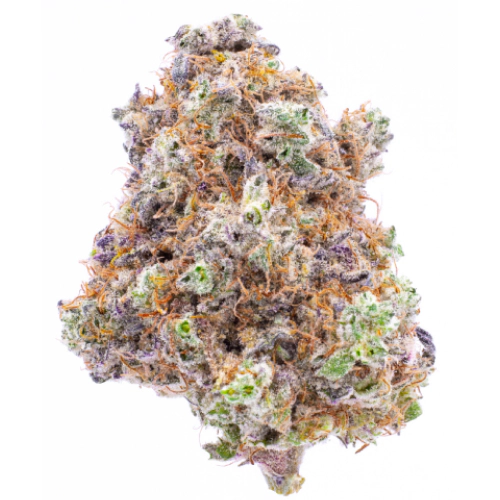
THC 13.5 - 15%
CBD 4.2 - 4.46%
Effect Sedated
Flavor Lemon
THC 15.5 - 19%
CBD 0.26 - 0.74%
Effect Giggly
Flavor Sweet

THC 23.33 - 25.33%
CBD 0.19 - 0.51%
Effect Sleepy
Flavor Pungent
THC 17.67 - 19.67%
CBD 0.38 - 0.7%
Effect Relaxed
Flavor Spicyherbal
THC 14 - 16%
CBD 0.7 - 0.94%
Effect Relaxed
Flavor Flowery
THC 23.25 - 26.75%
CBD 2.16 - 2.38%
Effect Happy
Flavor Apricot
THC 17.75 - 19.75%
CBD 0.38 - 0.72%
Effect Sleepy
Flavor Grape
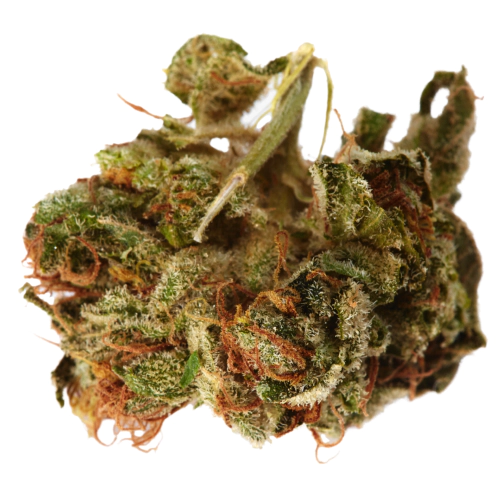
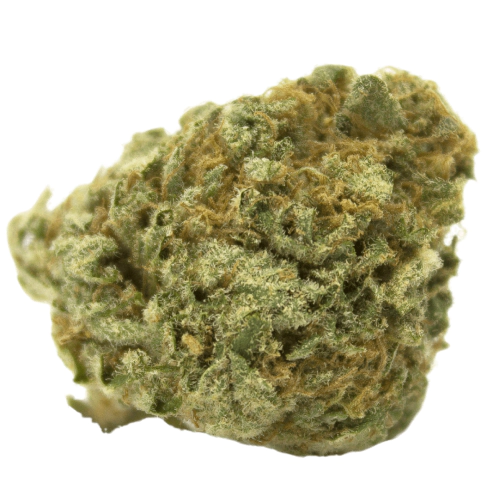

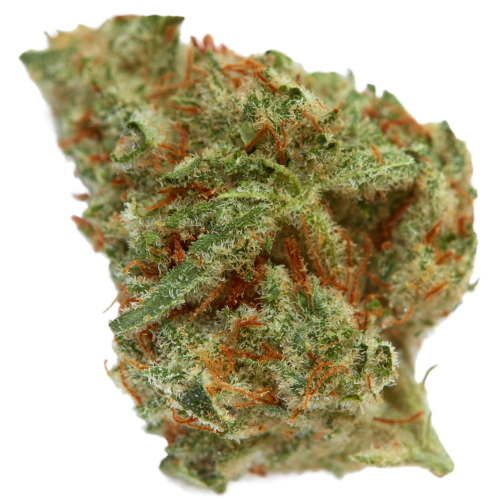
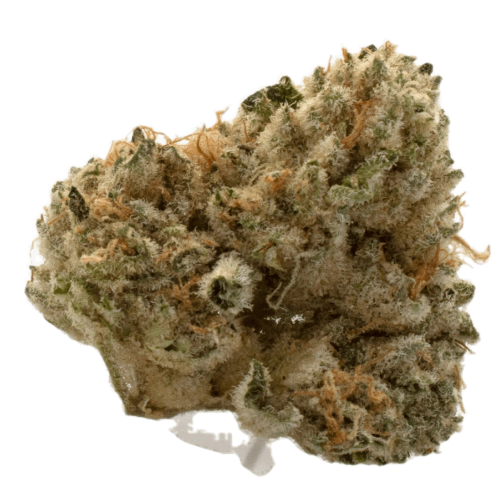


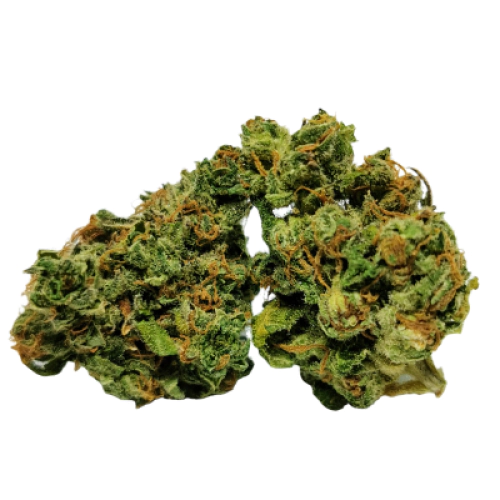
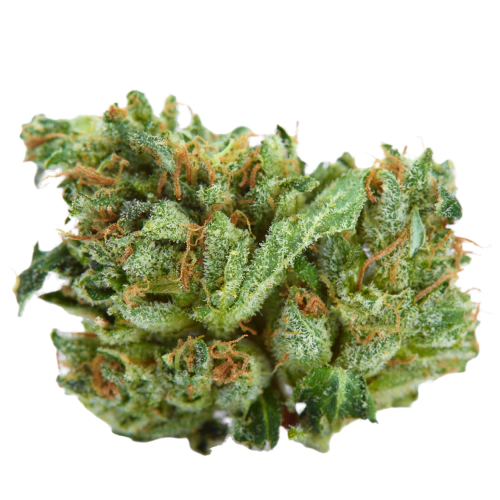


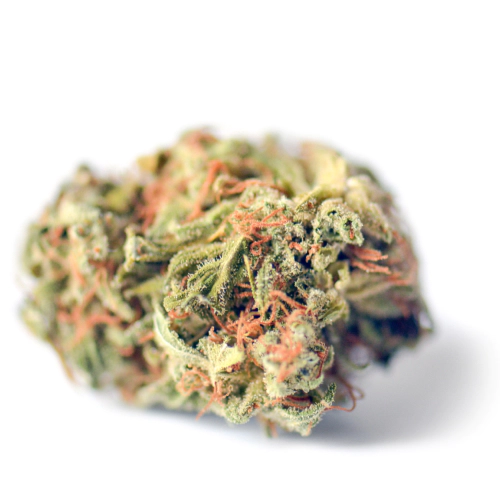
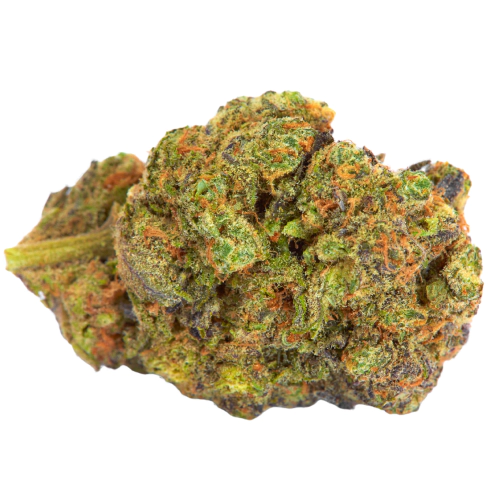



Be the first and share your opinion
Write a Review